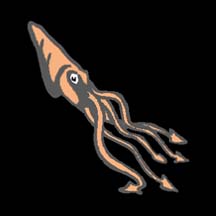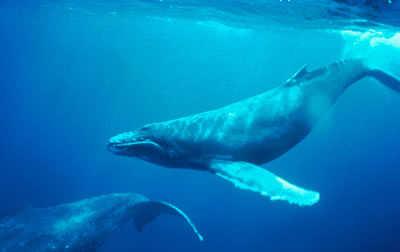Click on image for full size
Windows to the Universe original image
Mysterious Giant Squid Found on Tasmanian Beach
News story originally written on July 29, 2002
People do not often see giant squid, which live in the deep ocean. In fact, less than 50 giant squid have ever been seen. So when a giant squid was found dead on a beach in Hobart, Tasmania, Australia last week, it was a reason for excitement!
As the name implies, the squid are very large! The giant squid that was found in Tasmania is 50 feet long, and giant squid have been found that are up to 60 feet long. They have larger eyeballs than any other animal. Each eyeball is about 18 inches across which is larger than a person's head.
Giant squid live by themselves in the deep ocean, typically far away from land. They are Mollusks and are most closely related to other Mollusks such as smaller squid and octopus. All squid, even the small ones, are carnivores and hunt their prey, but only giant squid can hunt prey as large as whales.
The giant squid that washed up on the beach may be a new species, say scientists at the Tasmanian Museum and Art Gallery. The squid was taken to the museum, where scientists noticed large flaps of muscle around its legs, a characteristic never seen before. "It's basically like having a pile of muscles on your own body that nobody else has," said David Pemberton, chief curator at the museum.
The scientists at the museum will conduct research on the body of the giant squid and then they will put it on display at the museum for people to see.















